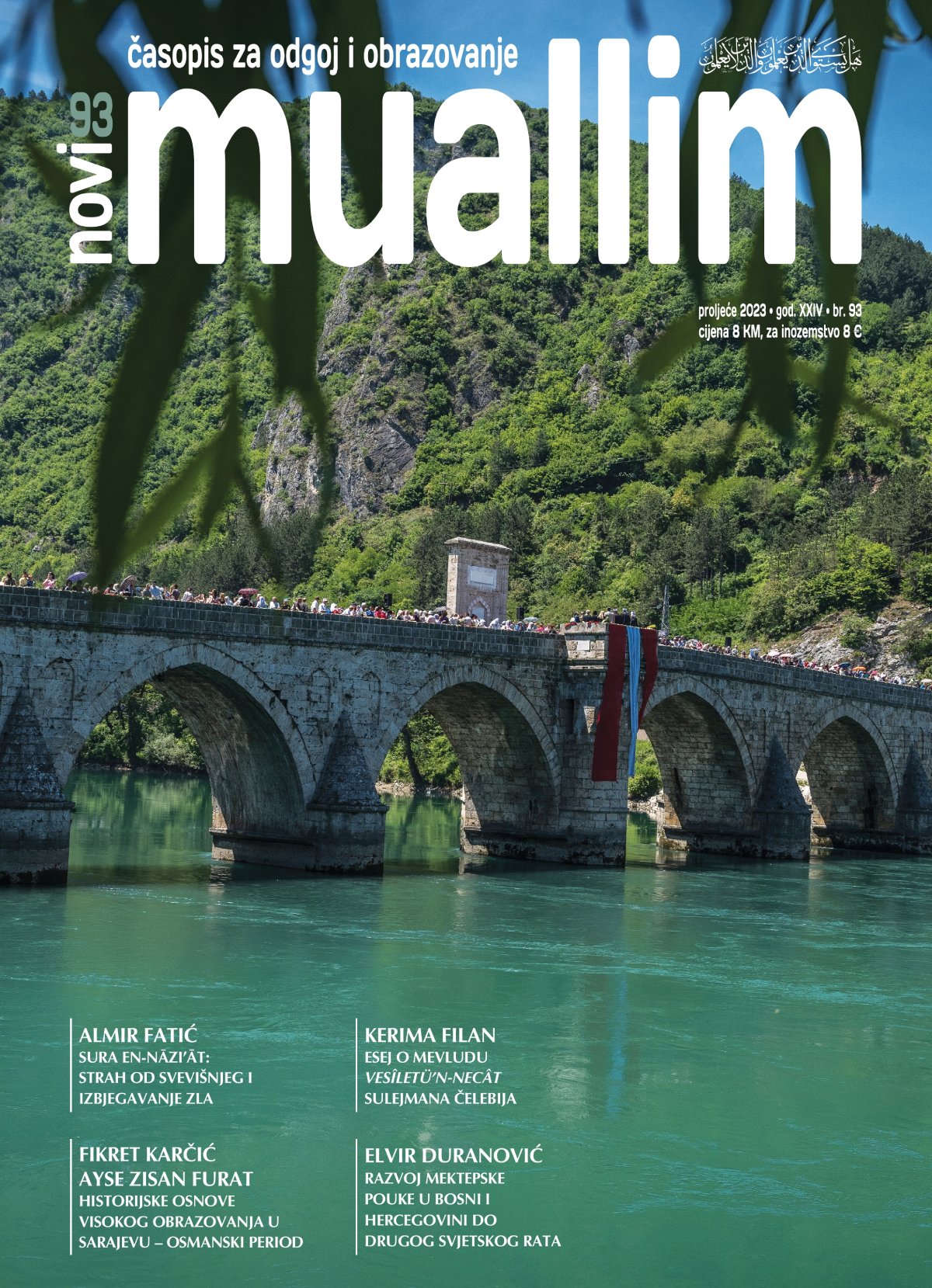Vjersko-prosvjetni i društveni angažman Ibrahima efendije Ajanovića (1884-1941)
DOI:
https://doi.org/10.26340/muallim.v24i93.2007Ključne riječi:
Ibrahim-efendi Ajanović, Šljedovići, Rogatica, Dub, imam matičar, džematski imamSažetak
UDK: 28-732.3(497.6):929 Ajanović I.
UDK: 929 Ajanović I.
U fokusu rada je život i rad Ibrahima efendije Ajanovića (1884-1941), istaknutog rogatičkog alima iz prve polovine 20. stoljeća. Putem dokumenata koji se čuvaju u Arhivu Islamske zajednice u Bosni i Hercegovini u radu pratimo Ibrahim-ef. Ajanovića od njegovog rođenja, školovanja, intelektualnog sazrijevanja, do službi koje je obavljao nepunih trideset godina. Nakon školovanja u medresi u Rogatici, šestogodišnjeg učenja u Merhemića medresi i trogodišnjeg školovanja u Daru-l-mualiminu u Sarajevu, Ibrahim-ef. je 1913. godine započeo raditi kao mualim u rodnome mjestu Šljedovići gdje je kasnije preuzeo i poslove imama, hatiba, imama matičara i na koncu dužnost džematskog imama. U svome radu posebno se istakao kao muallim ostvarivši zavidne rezultate u mektepskoj pouci na kojoj je osposobio značajnu grupu sibjan-mualima. Utvrđeni mektepski program proširio je i skoro ga izravnao s programom početnih medresa, a poput reisul-uleme Džemaludin-ef. Čauševića koristio je svaku priliku da govori o značaju odgoja i obrazovanja muslimanske djece. Njegovom inicijativom sagrađena je osnovna škola u Šljedovićima, te mektebi u Dubu, Đedovićima, Rodiću i drugim rogatičkim selima. U godinama pred početak Drugog svjetskog rata imenovan je za načelnika rogatičke opštine Dub i u tom svojstvu je dao nemjerljiv doprinos razvoju i afirmaciji dobrih međuljudskih odnosa između muslimanskog i pravoslavnog stanovništva ove opštine.
Downloads
Objavljeno
How to Cite
Broj časopisa
Rubrika
License

This work is licensed under a Creative Commons Attribution 4.0 International License.
Naknada:
a. Časopis ne naplaćuje naknadu za obradu članaka (APC) i naknadu za podnošenje članaka.
Autori koji objavljuju u ovom časopisu pristaju na sljedeće uvijete:
- Autori zadržavaju autorska prava i pružaju časopisu pravo prvog objavljivanja, pri čemu će rad jednu godinu po objavljivanju biti podložan licenci Creative Commons imenovanje koja omogućuje drugima da dijele rad uz uvijet navođenja autorstva i izvornog objavljivanja u ovom časopisu.
- Autori mogu izraditi zasebne, ugovorne aranžmane za ne-ekskluzivnu distribuciju rada objavljenog u časopisu (npr. postavljanje u institucionalni repozitorij ili objavljivanje u knjizi), uz navođenje da je rad izvorno objavljen u ovom časopisu.


